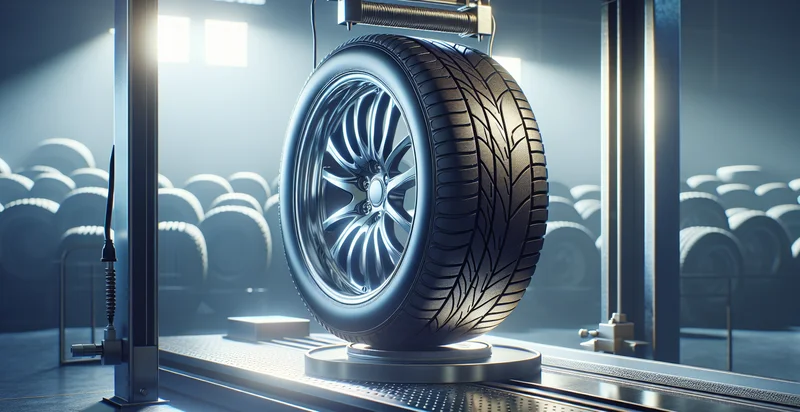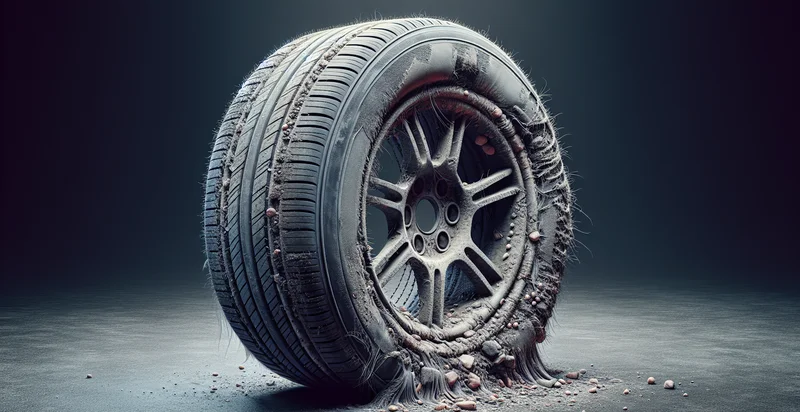Identify tire balance
using AI
Below is a free classifier to identify tire balance. Just upload your image, and our AI will predict the optimal tire balance for your vehicle. - in just seconds.

Contact us for API access
Or, use Nyckel to build highly-accurate custom classifiers in just minutes. No PhD required.
Get started
import nyckel
credentials = nyckel.Credentials("YOUR_CLIENT_ID", "YOUR_CLIENT_SECRET")
nyckel.invoke("tire-balance", "your_image_url", credentials)
fetch('https://www.nyckel.com/v1/functions/tire-balance/invoke', {
method: 'POST',
headers: {
'Authorization': 'Bearer ' + 'YOUR_BEARER_TOKEN',
'Content-Type': 'application/json',
},
body: JSON.stringify(
{"data": "your_image_url"}
)
})
.then(response => response.json())
.then(data => console.log(data));
curl -X POST \
-H "Content-Type: application/json" \
-H "Authorization: Bearer YOUR_BEARER_TOKEN" \
-d '{"data": "your_image_url"}' \
https://www.nyckel.com/v1/functions/tire-balance/invoke
How this classifier works
To start, upload your image. Our AI tool will then predict the optimal tire balance for your vehicle..
This pretrained image model uses a Nyckel-created dataset and has 17 labels, including Balanced, Bumpiness, Damaged, Excessive Wear, Flat Spot, Moderate Wobble, Noise, Normal Wear, Out Of Round and Overinflated.
We'll also show a confidence score (the higher the number, the more confident the AI model is around the optimal tire balance for your vehicle.).
Whether you're just curious or building tire balance detection into your application, we hope our classifier proves helpful.
Related Classifiers
Need to identify tire balance at scale?
Get API or Zapier access to this classifier for free. It's perfect for:
- Tire Manufacturing Quality Control: The false image classification function can be used in manufacturing plants to assess the quality of tire production. By identifying disqualified tires based on imbalance issues during the production phase, manufacturers can reduce waste and ensure only high-quality products reach the market.
- Fleet Maintenance Optimization: Fleet management companies can utilize the tire balance identifier to monitor tire conditions across their vehicles. By scheduling timely maintenance based on imbalance detections, they can enhance vehicle performance and safety while reducing costs associated with premature tire wear.
- E-commerce Product Verification: Online tire retailers can implement the false image classification function to verify tire images submitted by sellers. This ensures that only correctly balanced tires are listed for sale, protecting consumers from purchasing products that may lead to poor vehicle performance.
- Automotive Repair Shop Diagnostics: Automotive repair shops can leverage the tire balance identifier during vehicle inspections. By easily identifying imbalanced tires, mechanics can provide informed recommendations for repairs, thereby improving service quality and customer satisfaction.
- Ride-Hailing Service Fleet Efficiency: Ride-hailing companies can incorporate tire imbalance detection into their fleet maintenance programs. By analyzing tire balance across multiple vehicles, these companies can optimize routes and reduce operational costs by minimizing wear and extending the lifespan of tires.
- Tire Recycling Programs: Tire recycling initiatives can utilize false image classification to assess the condition of used tires. By identifying which tires are imbalanced and unfit for resale, recyclers can streamline their processes and improve the quality of recycled materials.
- Driver Safety Awareness Campaigns: Automotive safety organizations can adopt the tire balance identifier to promote awareness about the importance of tire maintenance among drivers. By educating consumers about the risks of imbalanced tires and showcasing effective identification methods, they can enhance overall road safety.


